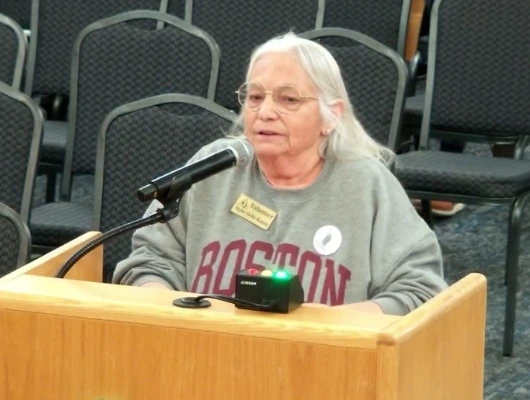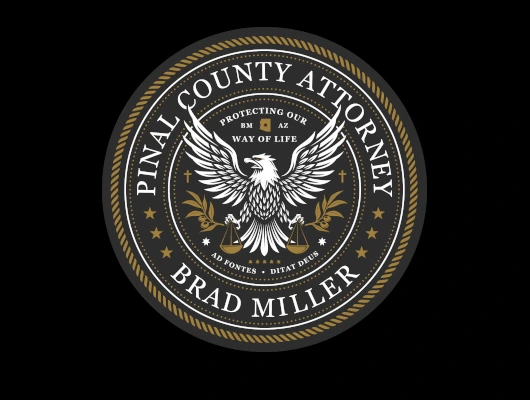The Maricopa Planning and Zoning Commission approved comprehensive code amendments on October 27, 2025. The changes revise Chapter 17 and Chapter 18 of Maricopa City Code to address state law compliance, update development standards, and correct technical errors.
The commission voted 3-1 to recommend approval to City Council. However, commissioners raised concerns about transparency and requested staff review several provisions before final adoption.
State Legislation Drives Major Changes
House Bill 2547 and House Bill 2447 drive several major changes. HB 2547, passed in April 2023, mandates that municipalities consider housing impact statements for zoning ordinances or text amendments of general applicability. HB 2447 requires cities to authorize administrative approval of preliminary and final plats without public hearings.
Housing Impact Consideration Required
The housing impact statement analyzes how code changes affect construction costs. The statement must include three elements:
- Cost estimates for building housing
- Data supporting the changes
- Less costly alternatives
Most amendments show no housing impact. However, according to city staff analysis, two changes could reduce costs and timelines. Removing covered parking requirements in the Mixed-Use Heritage District should lower construction costs. The shift to administrative approval required by HB 2447 could, according to housing impact statements, reduce preliminary plat processing by three to six weeks and final plat processing by another three to six weeks.
Plat Approval Process Moves to Staff
The most significant changes shift plat approvals from public hearings to administrative review. Preliminary plat approval moves from Planning Commission to the Zoning Administrator. Final plat approval transfers from City Council to the Development Services Director. Property owners may appeal preliminary plat decisions to the Hearing Officer.
Commissioner Bill Robertson expressed strong concerns about removing public participation. “We have removed an element of public transparency,” Robertson said. “We have further damaged the trust of the community in government.”
City Attorney Nick Cook explained the changes target technical reviews after property rights are established through rezoning. Major land use decisions still require public hearings, but subsequent plat approvals become administrative once development rights are granted.
Temporary Use Permits Clarified
The amendments clarify temporary and seasonal outdoor sales regulations. These sales include events like Christmas tree lots, fireworks stands, and pumpkin patches. Temporary outdoor sales require a zoning permit before starting. Sales must occur on private property without blocking parking or creating hazards.
Seasonal sales receive specific timeframes and signage allowances. Pumpkin sales run October 1 through November 7. Christmas tree sales operate November 15 through December 31. Other holiday sales extend one month before and one week after the holiday.
The amendments increase allowable signage for seasonal operations. Sellers may display two 40-square-foot banners, one six-square-foot A-frame sign, and one 12-square-foot flying banner. No additional sign permits are required.
Food Courts Added to Heritage District
The amendments add food courts as a permitted use in the Mixed-Use Heritage Overlay District. The changes address repeated requests from potential food court operators.
Rick Williams, Planning and Zoning Division Manager, said previous code requirements priced out food court developers. “We’ve had four different pre-application meetings with folks trying to do this,” Williams explained. High engineering and construction costs killed every proposal.
The new section defines food courts and establishes standards. A food court means a unified establishment serving food from multiple vendors.
Commercial Development Art Requirement
Large commercial developments must now incorporate public art. The requirement applies to commercial projects of 50,000 square feet or larger. Developments must include pedestrian-oriented forms of art.
Covered Parking Requirement Removed in Heritage District
The amendments remove a two-covered-parking-space requirement for residential units in the Mixed-Use Heritage District. The change applies to both single-family attached and detached dwellings.
Housing impact analysis indicates this change should reduce construction costs for materials, labor, and design.
Other Technical Changes
Several technical corrections improve code accuracy and usability. Staff relocated recreation and tot-lot design requirements from subdivision regulations to the zoning ordinance.
The amendments clarify separation requirements for group homes with seven to ten residents. State law mandates these facilities maintain 1,200 feet between locations.
Staff added definitions for Single-Room Occupant housing and food courts. Single-Room Occupant housing means individuals rent a single room as their primary residence, typically sharing communal facilities like kitchens and bathrooms within a multi-tenant building. The amendments also codify screening requirements for downspouts and equipment cabinets.
Commission Recommendations
The commission approved the amendments with several recommendations for staff review. Commissioners asked staff to explore public notification procedures for plat approvals and ways to preserve public participation in the process. The commission also asked staff to review whether covered parking requirements in the Heritage District should vary based on property size.
Commissioner Ted Yocum cast the sole opposing vote without stating specific objections.
Public Input Absent
No public comments were received during the review period. The city posted public comment opportunities on September 8, 2025. Staff published newspaper advertisements on October 9, 2025.
The amendments move to City Council for final consideration. HB 2447 requires compliance by its December 31, 2025 effective date.








